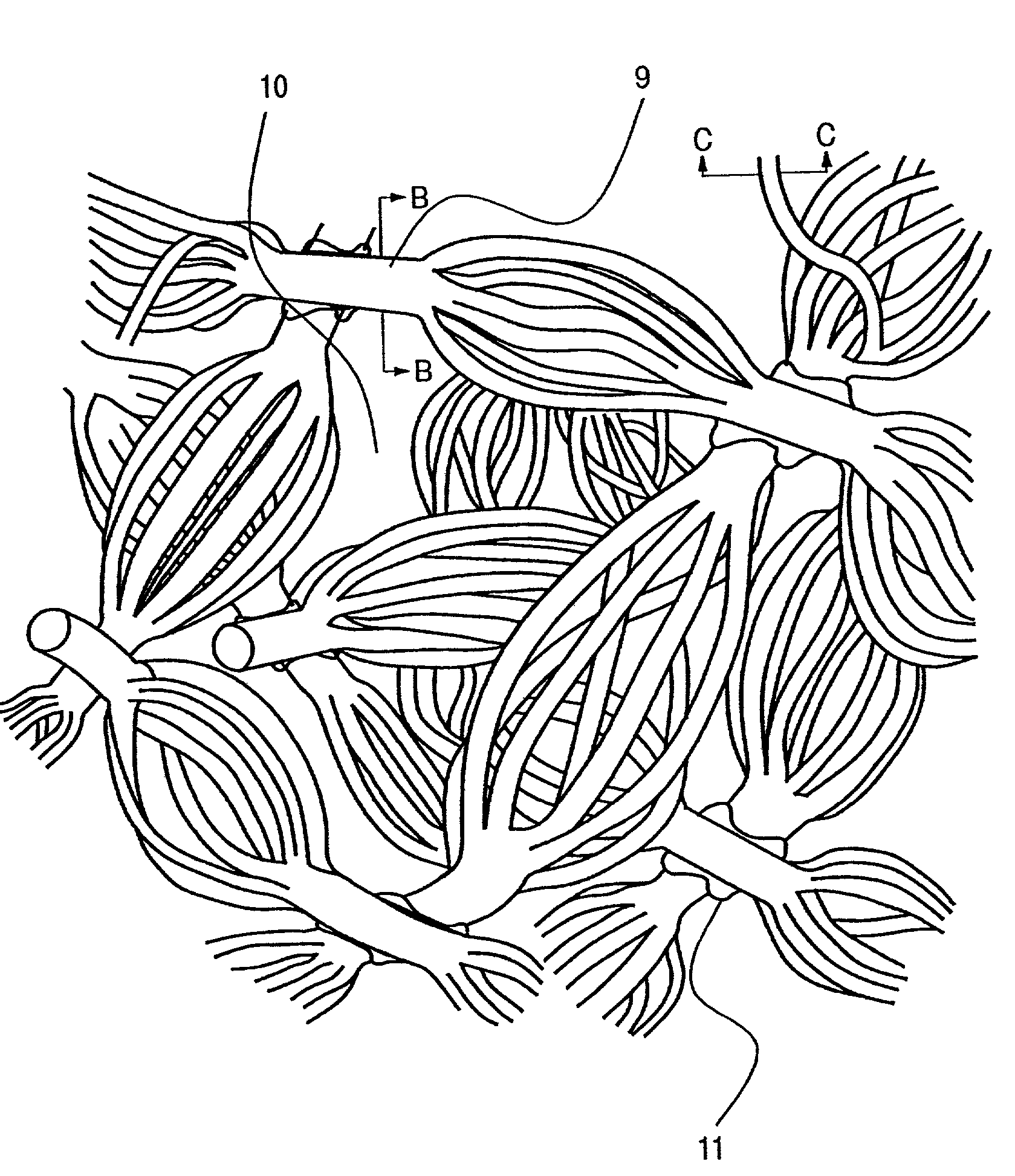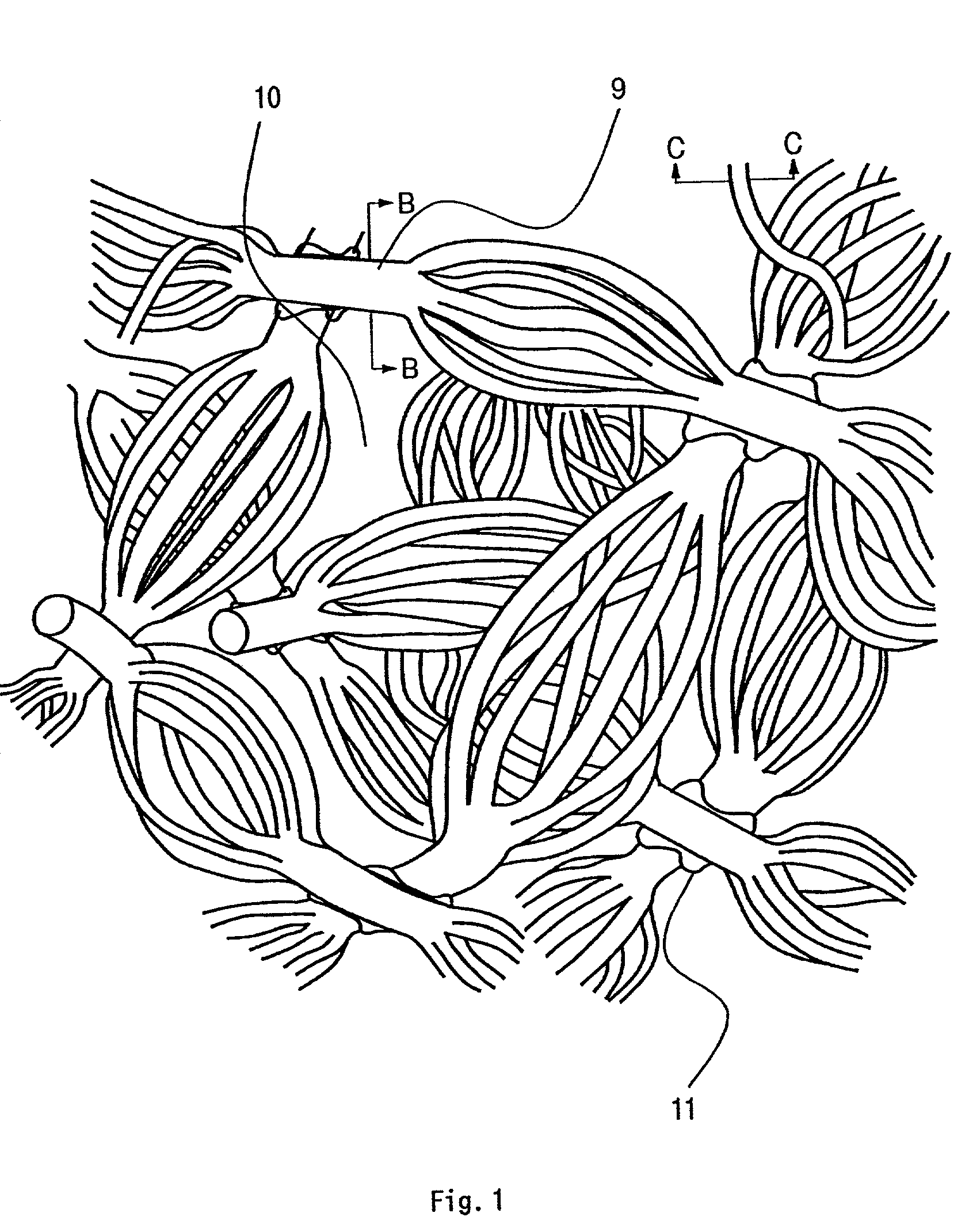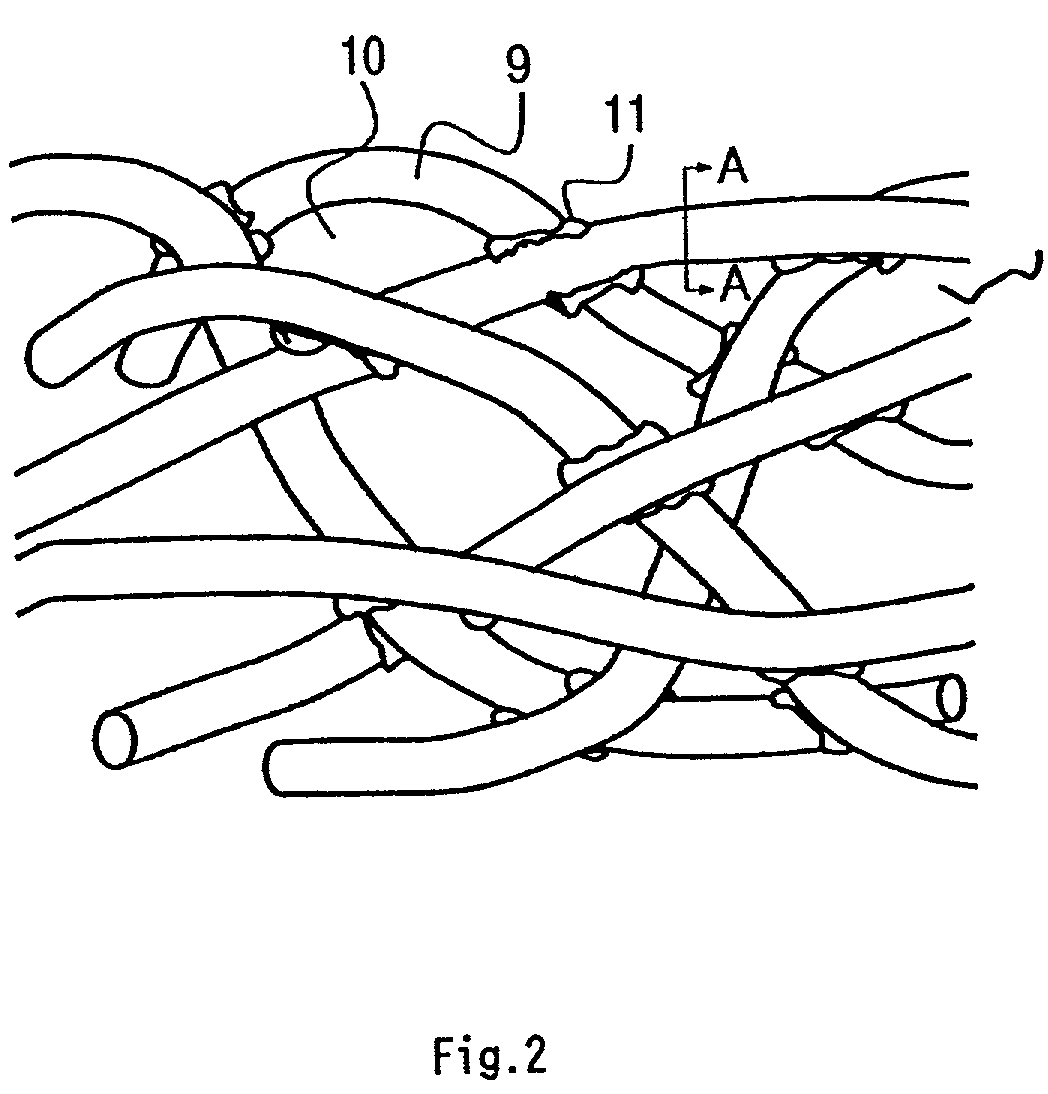Process for producing separator for batteries, the separator for batteries, and alkaline storage batteries using the same
a technology of separator and alkaline storage battery, which is applied in the direction of nickel accumulator, cell components, sustainable manufacturing/processing, etc., can solve the problems of difficult to increase the degree of sulfonation, and achieve the effect of high hydrophilic property and higher degree of sulfonation of non-woven cloth
- Summary
- Abstract
- Description
- Claims
- Application Information
AI Technical Summary
Benefits of technology
Problems solved by technology
Method used
Image
Examples
example 1
[0086]The specific examples are explained as below.
[0087]Polyolefin fibers and polyethylene fibers as shown in FIG. 3 are integrated into a focusing fiber that can be divided into 8 as fine spun fibers in a way that the respective fibers which contact with one another are bonded by fusion at contacting portions and the crossing parts of fibers (diameter: 10 μm) with polyolefin fibers and polyethylene fibers as fine spun fibers alternatively arranged in the circumferential direction of the sectional view in the focusing fibers are entangled by a polyethylene whose melting point is low thereby obtaining a non-woven cloth with the average thickness of 100 μm, porosity of 60% and tensile strength of 6.2 kg / cm2.
[0088]By exposing the said non-woven cloth to a high-speed water jet, disentangled parts of the focusing fibers which constitute the said non-woven cloth were divided into each fine spun fiber, thereafter making the fine fiber pass through a hot roll at the temperature of about 80...
examples 2 to 4
[0089]Separators with the degree of sulfonation of 5×10−3, 10×10−3 and 30×10−3 respectively were obtained by the same method as in Example 1 except that the time for exposure to about 3 wt % of SO3 gas airflow with the temperature of 50° C. was adjusted.
examples 5 to 7
[0090]Separators with the degree of sulfonation of 15×10−3, 10×10−3 and 5×10−3 respectively were obtained by the same method as in Example 1 except that the non-woven cloth comprising a core-sheath type polyolefin fiber for multi purpose whose diameter is about 9 mm was used and the time for exposure to about 3 wt % of SO3 gas airflow with the temperature of 50° C. was adjusted in order to obtain desired degree of sulfonation.
PUM
| Property | Measurement | Unit |
|---|---|---|
| Thickness | aaaaa | aaaaa |
| Thickness | aaaaa | aaaaa |
| Diameter | aaaaa | aaaaa |
Abstract
Description
Claims
Application Information
 Login to View More
Login to View More - R&D
- Intellectual Property
- Life Sciences
- Materials
- Tech Scout
- Unparalleled Data Quality
- Higher Quality Content
- 60% Fewer Hallucinations
Browse by: Latest US Patents, China's latest patents, Technical Efficacy Thesaurus, Application Domain, Technology Topic, Popular Technical Reports.
© 2025 PatSnap. All rights reserved.Legal|Privacy policy|Modern Slavery Act Transparency Statement|Sitemap|About US| Contact US: help@patsnap.com



